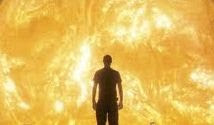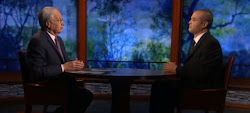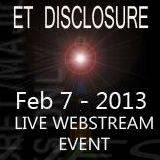“Our intentions were good ones.” - Sure they were. Paste the link if you can't access the links.
http://www.texastribune.org/stories/2010/feb/22/dna-deception/
Be Well.
David
DNA Deception

When state health officials were sued last year for storing infant blood samples without parental consent, they said it was for medical research into birth defects, childhood cancer and environmental toxins. They never said they were turning over hundreds of dried blood samples to the federal government to help build a vast DNA database — a forensics tool designed to identify missing persons and crack cold cases.
A Texas Tribune review of nine years' worth of e-mails and internal documents on the Department of State Health Services’ newborn blood screening program reveals the transfer of hundreds of infant blood spots to an Armed Forces lab to build a national and, someday, international mitochondrial DNA (mtDNA) registry. The records, released after the state agreed in December to destroy more than 5 million infant blood spots, also show an effort to limit the public’s knowledge of aspects of the newborn blood program, and to manage the debate around it. But the plaintiffs who filed the lawsuit never saw them, because the state settled the case so quickly that it never reached the discovery phase.
DSHS spokeswoman Carrie Williams says that while the department’s general philosophy was to save blood spots for public health research, “we did not have an exclusive policy.” She says DSHS participated in the project because officials believed it would help in missing-persons cases — and knew the blood spots could not be linked back to a particular individual. “Our understanding of mtDNA is that it’s not used to pinpoint exactly who a person is, but can help determine origins,” Williams says. “Our intentions were good ones.”
But Jim Harrington, the civil rights attorney who filed the blood spot lawsuit last year on behalf of five Texas parents, believes DSHS meant to deceive the public. When he was negotiating with state officials, he says, he specifically asked what research the blood spots were being used for — and there was no mention of the federal mtDNA project. He says he was stunned by how quickly the state settled the lawsuit. “Sometimes there are slam-dunk cases, but I’d never seen this kind of case settle without discovery,” says Harrington, director of the Texas Civil Rights Project. “This explains the mystery of why they gave up so fast.”
For decades, the state has screened newborns for a variety of birth defects, pricking their heels and collecting five drops of blood on a paper card. Until 2002, the cards were thrown out after a short storage period. But starting that year, the state health department began storing blood spots indefinitely, for “research into causes of selected diseases.” Four years later, DSHS began contracting with Texas A&M University’s School of Rural Public Health to warehouse the cards, which were accumulating at a rate of 800,000 a year. State health officials never notified parents of the changes; they didn’t need consent for the birth-defect screening, so they didn’t ask for it for research purposes. The agency’s rationale was that it let parents who asked opt out of the newborn blood screening and de-identified all of the samples before shipping them off.
Over the last several years, researchers have requested Texas baby blood spots for a variety of medical projects: to study the gene involved in club foot, to inspect the DNA of infants who develop childhood cancer, to examine prenatal lead exposure. Those are the projects state health officials have touted repeatedly before lawmakers and critics. But the least publicized of these research projects is arguably the most interesting. Between 2003 and 2007, the state gave 800 de-identified blood samples to the Armed Forces DNA Identification Laboratory (AFDIL) to help create a national mtDNA database.
MtDNA is extremely valuable in forensics because it’s easier to find and extract from human cells than nuclear DNA. In addition to blood, it can be identified in hair, bones, teeth and damaged or degraded biological samples and can be used to identify victims of mass disasters or to solve long-since-cold criminal cases. But it’s only as valuable as its sample size. AFDIL scientists, in conjunction with the research branch of the Justice Department, approached Texas in a $1.9 million effort to expand the country’s mtDNA database — part of the President’s DNA Initiative launched under George W. Bush. The researchers wanted “anonymous and maternally unrelated” blood samples from Texas Caucasians, African-Americans and Asians — and from Hispanics and Native Americans in particular — to round out their genetic record. The researchers also took samples from prison populations and infant blood screening in other states, including Florida, Minnesota and California. They did not pay Texas for the samples.
Eventually, research proposals indicate, federal officials hoped to be able to share this data worldwide, “for international law enforcement and investigation in the context of homeland security and anti-terrorism efforts.”
Whether Texas officials were concerned about the perception of the project, or simply didn’t think it was newsworthy, they never mentioned it. In presentations, in public reports and in e-mails sent to reporters as recently as last year, state health officials never brought up the federal project — even when they discussed the merits of roughly two dozen medical research projects designed to “unlock the causes of childhood disorders” like autism and diabetes.
In November, when The Texas Tribune first filed an open-records request with DSHS to review blood spot records, the agency said the information requested was confidential. Two weeks later, when the lawsuit settlement was formally signed, the Tribune asked again, and this time the agency relented. But the box of documents officials turned over hardly referenced the mtDNA project, aside from a single e-mail referencing a “US Department of Justice/National Institute of Justice and the Armed Forces Institute of Pathology/Armed Forces DNA Identification Laboratory.” When the Tribune pressed health officials about the missing research files, they produced them, saying it was an oversight, and that the documents had been overlooked in their initial search.
The records the agency initially released paint a portrait of an agency that walked on eggshells around the baby blood spot collection — from 2001, when lawmakers first debated whether to warehouse the cards, through last year, when they passed a law in response to the civil rights lawsuit giving parents better options to opt out.
In 2001, when the Legislature considered a newborn-blood-spot collection bill that state health officials didn’t like, they took action. In an e-mail chain, an associate commissioner described how she and another official “planted questions” and “planted a note” with sympathetic lawmakers (former state Reps. Bob Glaze, D-Gilmer, and Glen Maxey, D-Austin) before a public hearing. “I suspect this bill will die …” wrote the official, who no longer works for the state. (The bill didn’t make it out of committee.) Glaze couldn't be reached for comment. Maxey said he couldn't recall the bill but routinely met with health department staffers to pick their brains about pertinent bills.
E-mails indicate that in 2003, when the agency started to release blood spots for outside research, officials knew they had a parental consent issue on their hands — but tried to avoid it. When a researcher proposed a project, the director of birth defects monitoring wrote that he’d “prefer to not have to go through” the process of getting consent. Another agency official responded that parents "never consented for blood spots to be used for research. … On the other hand, I believe [the health department] already uses (deidentified?) blood spots for some research, so that might not be a big deal.”
In 2006, when the agency was beginning to store blood spots at Texas A&M, the university asked for permission to put out a press release announcing it. The agency balked. “What do you think of this idea? Makes me a bit nervous,” the manager of the birth defects surveillance division wrote in an e-mail to five of his colleagues. Another responded: “This makes me nervous. Genetic privacy is a big ethical issue & even though … approval is required for use of the spots in most situations and great care is taken to protect the identity of the spots, a press release would most likely only generate negative publicity.” One official asked the university not to do it; the university agreed.
When asked about the e-mails, agency officials said a decision not to send out a press release “isn’t an indication of our level of openness.” “We don’t routinely do news releases about every agency initiative or contract,” Williams says, “and obviously this is a sensitive topic.” But they acknowledged that staff members are not permitted to “plant” questions with lawmakers. Given that the e-mail exchange happened in 2001, and that the employee no longer works for the agency, Williams says, “there is no way for me to definitively tell if there was any punishment.”
Scientists say baby blood spot research is incredibly valuable, and that the genetic origins of human diseases can be traced through mtDNA samples if there are enough available. They say there are fail-safe methods for stripping identifying information from the samples, so they could never be used for illicit purposes. The problem, some say, is that scientists have used the public’s unease with the subject as an excuse not to talk about it. “As scientists, we’ve failed in teaching people about genetics in the United States,” says Dr. Bennett Van Houten, a molecular oncologist at the University of Pittsburgh Cancer Institute who formerly worked at the University of Texas Medical Branch in Galveston. “We need to work harder at that — at teaching them the facts.”
Williams says that at the direction of lawmakers last session, parents now receive more information at the hospital about the storage and use of bloodspots and are given a better opportunity to opt out. While the agency is destroying more than 5 million baby blood spots collected before the new legislation took effect, she says, officials are not asking outside researchers — including those at the Armed Forces lab — to return the samples they were given. But they must destroy them when they are done with them.
“The core mission is to screen all babies for life-threatening disorders,” Williams says. “We care deeply about this mission, and we have made some changes and are moving forward.”





No comments:
Post a Comment